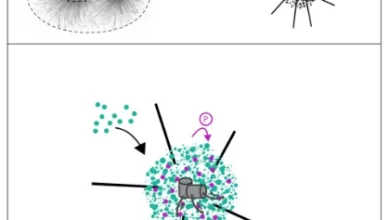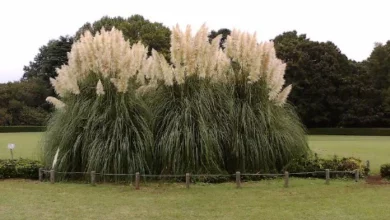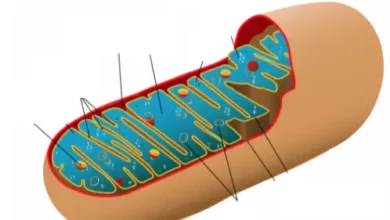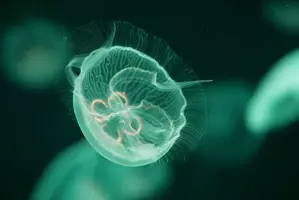The immune response
The immune response or immune response occurs in two forms: the innate and nonspecific immune response and the specific or adaptive or acquired immune response.
When a germ enters the body, it encounters barriers such as the skin, oral mucosa, lysozymes, sweat, stomach acid, cilia, and mucus found in the windpipe.
The cilia cause the germ to go to the larynx instead of the pharynx, thus the germ is swallowed and destroyed by stomach acid . The mucus sticks to the pathogen and prevents it from entering the body.
If this natural barrier fails, the first elements to appear are phagocytic cells, NK cells, and the complement system (beta-globulins). If these barriers also fail, T and B lymphocytes and antibodies appear.
The first two barriers are innate and nonspecific immunity that have no memory and are found from birth. He always acts with the same intensity. In contrast, T and B lymphocytes have memory: they remember the antigen when it entered and when it re-entered, and they attack more intensely than the first time. These cells are memory cells (or resentful) and together with the antibodies they form the acquired or specific immunity that is acquired by contact and experience.
Stages of the immune response
1. Innate immune response
It all starts with the entry of an immunogen that will trigger the specific immune response. However, the macrophages of the innate immune response act first, phagocytizing the immunogen.
The immunogen is reduced to small particles and the cell of the immune system re-expresses the agent in its membrane together with other molecules of its own: the major histocompatibility system (MHC) and they intervene in the rejection of transplants.
Specific or adaptive immune response, cellular immunity
Then the helper T lymphocyte that match the antigen that the macrophage is displaying binds to it. This union produces a series of chemical stimuli that activates the T lymphocyte and definitively activates the macrophage.
Next, the macrophage begins to secrete a cytokine ( interleukin I which is the initiator cytokine of the specific immune response). The T helper lymphocyte has receptors for interleukin I that bind to it. Two signal states (interleukin I and the T helper cell – macrophage cell junction) definitely activate the T helper cell (by intracellular signals).
Next, the helper T lymphocyte begins to proliferate and produces daughter cells identical to the mother cell (recognizes the same antigens: polyclonal activation ), in addition, it secretes another cytokine: interleukin II (amplifier of the immune response) and presents receptors for interleukin II that induces more division of both daughter and mature cells.
In addition, it is capable of activating the cytotoxic T lymphocyte, the monocyte, the B lymphocyte and the natural killer cells. In addition, it activates other helper T lymphocytes that recognize other antigens and is a polyclonal activation.
Once activated they begin to proliferate and many of them secrete more interleukins (II or different). All of these interleukins activate other cells that secrete more cytokines than activate other cells, and so on.
The way to cut off the immune response is with the suppressor T lymphocyte which makes the helper T lymphocyte stop or the effector cells.
When suppressor T cells fail, autoimmune diseases occur . In this way, the immune response recognizes, due to excessive proliferation, as foreign agents of its own, for example: allergies, grafts …
Specific immune response
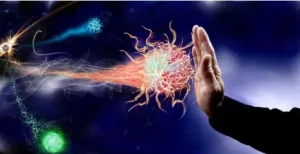
For the specific immune response to take place, it is necessary that an agent and the individual first be immunized . This response is specific and presents memory, thereby increasing intensity. The humoral immune response is carried out with antibodies and the cells that carry it out are T lymphocytes (helper, suppressor, cytotoxic) and B lymphocytes.
When the specific immune response occurs it is called active immunity (because the individual acts). Individuals can be immunized by transferring the humoral and cellular elements of another already sensitized individual or by transferring antigens. Active immunology can be given through blood or cells (from the plasma or humoral serum of the sensitized individual).
The immunity that the second individual acquires is passive immunity from the first week on, when the number of antibodies increases.
Characters of the specific immune response
- Specificity : there is a specific clone of cells that will respond specifically to an antigenic determinant of an antigen.
- Diversity : there are clones reactive against most antigenic determinants (in the range of billions): clonality.
- Memory
- Self-limitation : an immune response occurs in response to an antigenic stimulus and if it disappears, so does the response (self-regulation).
- Discrimination capacity : between what is one’s own and what is not one’s own. During their maturation, T and B lymphocytes are prepared to recognize their own antigens so as not to attack them and non-self antigens. Those that recognize their own are eliminated before leaving the peripheral blood and if they manage to leave they are inactivated.
Specific immune response, humoral immunity
First: recognition
In order to recognize the foreign antigen, T and B lymphocytes have receptors on their membrane: T lymphocytes (CD4 +) have TCR receptors and B lymphocytes, BCR.
BCRs recognize soluble antigens such as hydrocarbons and lipids. TCRs recognize membrane-bound antigens of accessory or presenting cells (macrophages) that are not soluble (they are small protein sequences).
The macrophage phagocytes until presenting the antigen on the surface together with self molecules (MHC II), the helper T lymphocyte recognizes the set of self molecules and the antigen. The cells are said to be restricted by the MHC (Major Histocompatibility System).
The helper T lymphocyte is restricted by MHC II, the cytotoxic T lymphocyte by MHC I, and macrophages by both.
The cytotoxic T lymphocyte needs to recognize the antigen and it does so by recognizing the antigen bound to MHC I molecules. They also need presenting cells but it can be any cell that has to be killed (tumorous or infected by viruses or intracellularly growing microorganisms). The B lymphocyte through its surface immunoglobulin recognizes large antigens such as hydrocarbons and lipids and is not restricted by the MHC.
Second: Activation
There are two stages in the activation of the specific immune response:
- Proliferation phase: the first thing they do when recognizing the antigen is to divide when a clone of cells that recognize the same as the stem cell.
- Differentiation phase: it differentiates into cells capable of eliminating:
- The B lymphocytes become a plasma cell: the immunoglobulin binds to the antigen and is phagocytosed.
- CD4 + T lymphocytes have a function of secreting cytokines that stimulate macrophages to increase their functions: delayed hypersensitivity (they are other lymphocytes).
- CD8 + cytotoxic T lymphocytes is activated cytotoxic T lymphocyte.
Third: Effector
Activated cytotoxic T cells kill antigen, and helper T cells produce cytokines for macrophages to act.
At the end of these phases, some cells have become effectors and die and others in memory that have a long half-life and that can persist in organisms even if the antigen does not exist.
